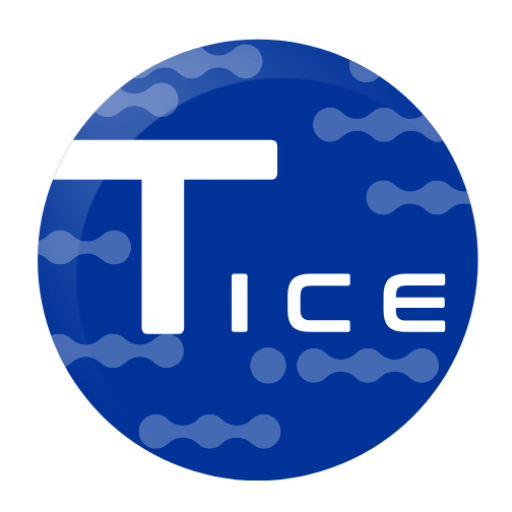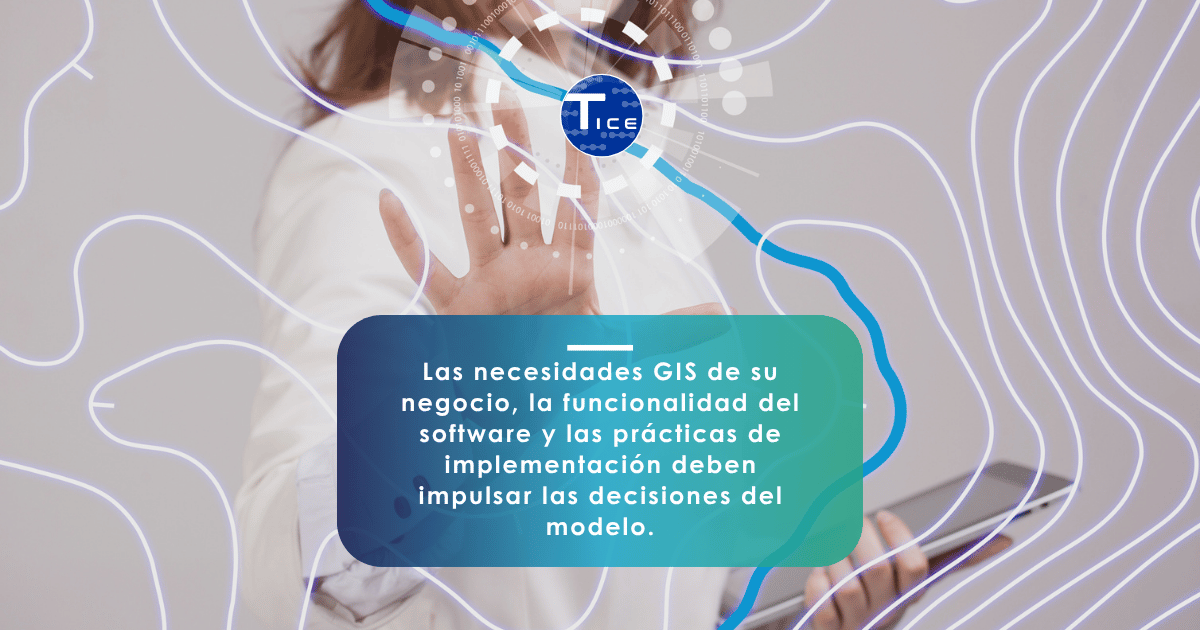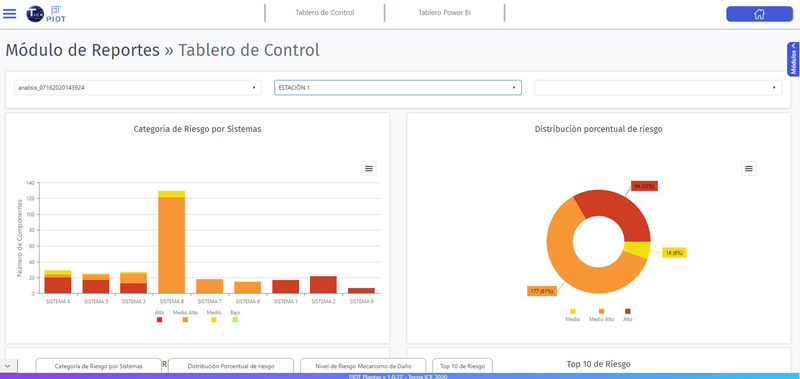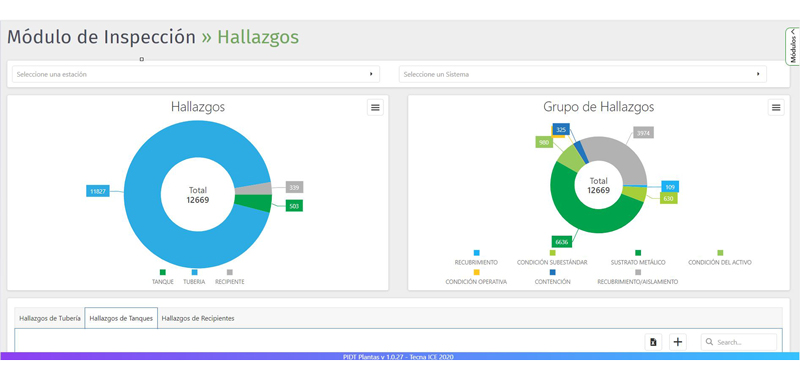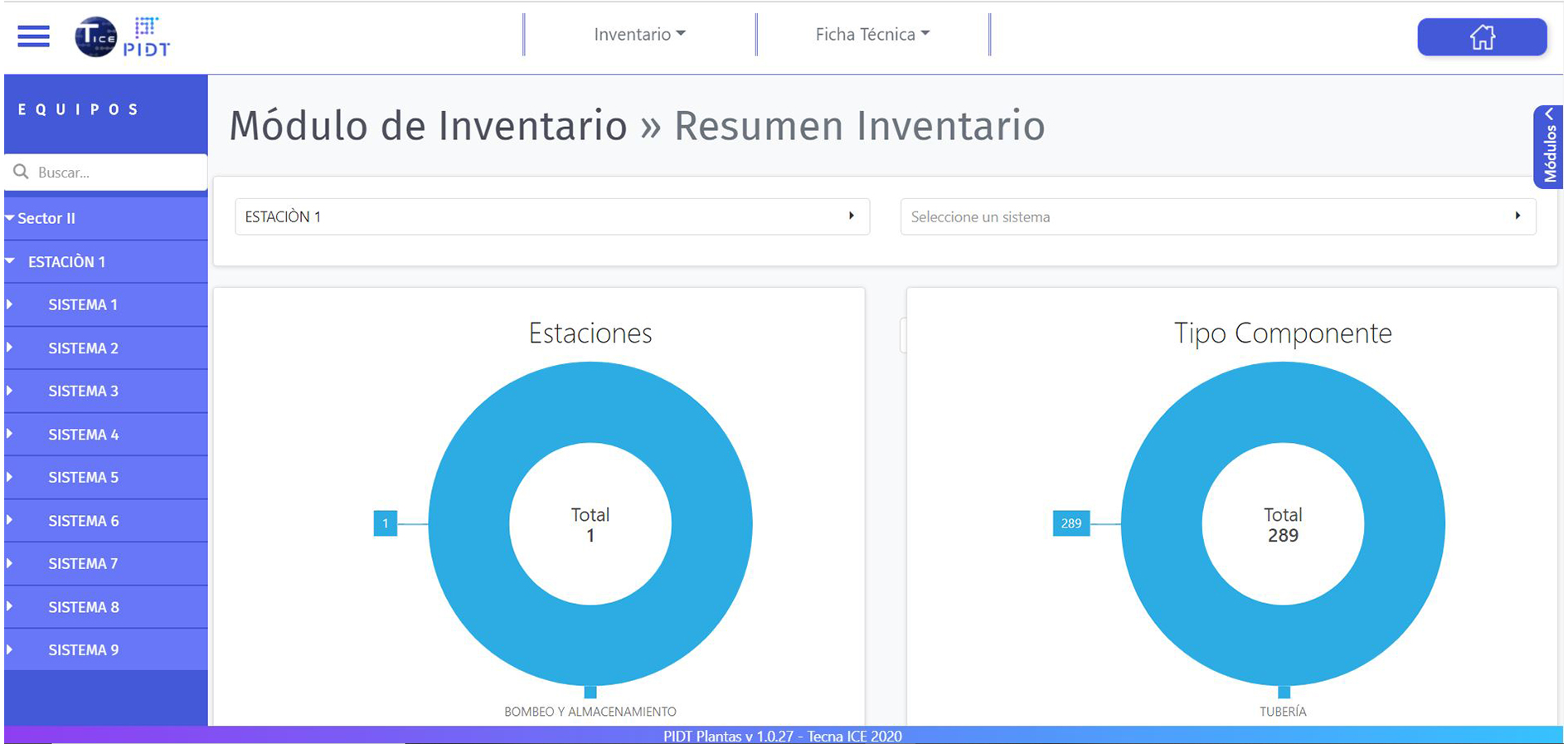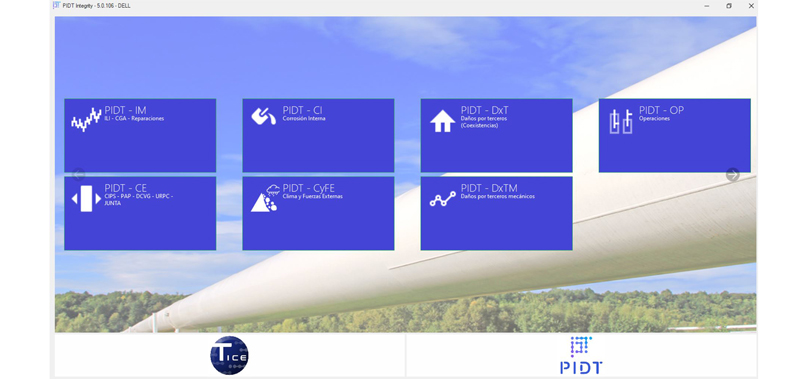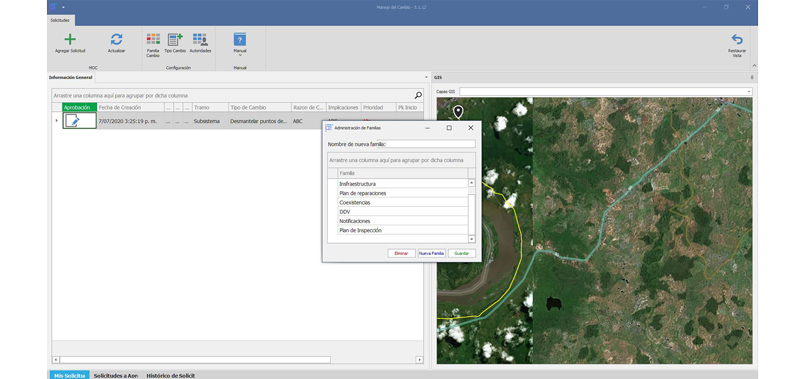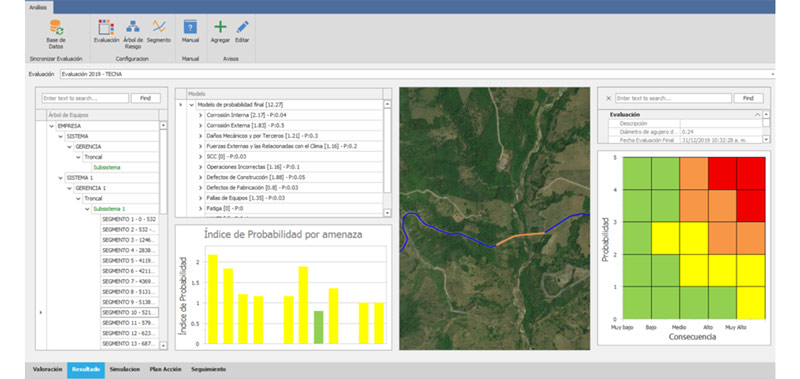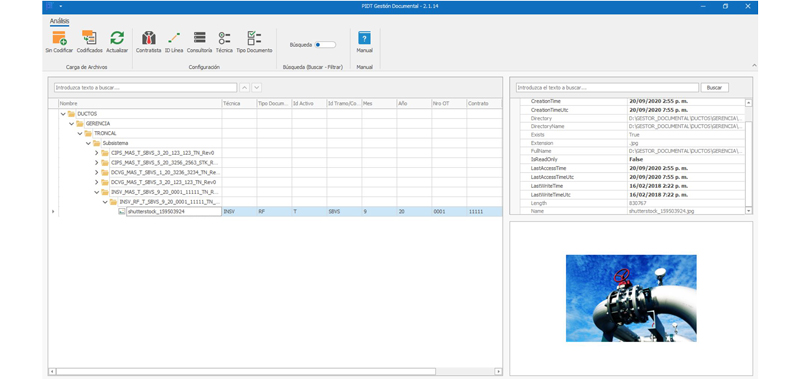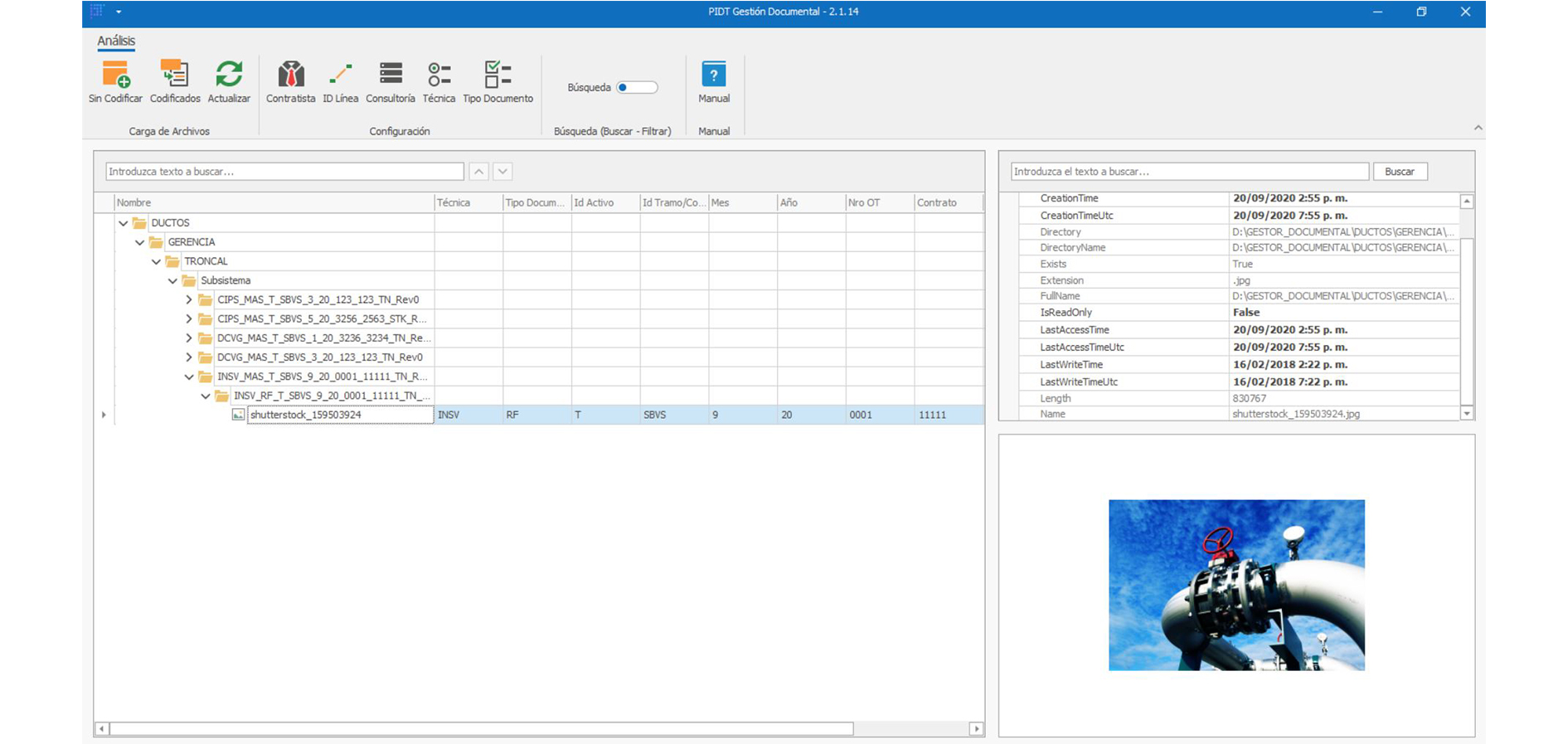Differences between PODS and UPDM: GIS Models for Pipeline Management
Have you ever been confused with all the database options for pipeline GIS management? What is the difference between them all? If I operate regulated and unregulated pipelines, can I store my distribution and transmission functions in the same schematic and network?
Although the industry has been using GIS for hydrocarbon transportation pipeline management for years, there are still questions about data storage and best practices. Managing the entire lifecycle of an asset in GIS is difficult enough, but it gets even more complicated when we look at centralized data storage options and corresponding system architectures. As it stands today, there are currently four implementation options on the market depending on your business needs.
How many database model options are there?
The four current options are Pipeline Open Data Standard (PODS), PODS Spatial, ArcGIS Pipeline Data Model (APDM) and Esri’s Utility Pipeline Data Model (UPDM). Hopefully, this publication can provide insight into your organization’s direction or simply provide some differences between these options.
Types of database models
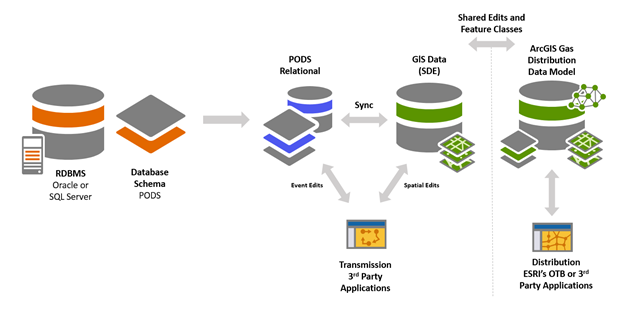
RELATIONAL DATABASE MODEL
(PODS)
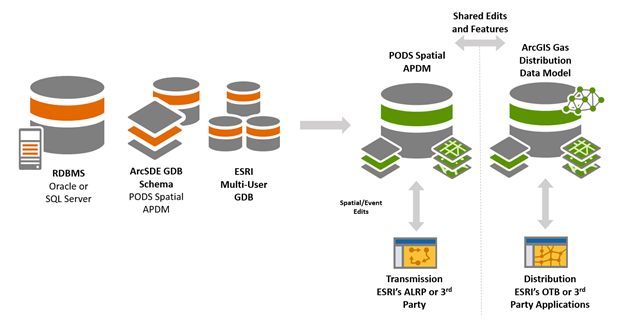
GEODATABASE MODEL
(UPDM, APDM, PODS Spacial)
Utility and Pipeline Data Model (UPDM) database model
The Utility and Pipeline Database Model (UPDM) is widely adopted by independent or vertically integrated gas and hazardous liquid pipeline network operators. Over the years, the model has been continuously updated based on industry needs and technology changes (including linear reference management). In ArcGIS, the Utility and Pipeline Data Model has become the default data model for gathering, transmission and distribution systems.
In 2018, this database model was updated to begin taking advantage of ArcGIS’ new utility network management capabilities. As part of this work, the data model was split into modules to simplify implementation for Oil & Gas organizations in those situations that do not need all of the rich functionality of UPDM. However, the model does not yet take full advantage of the simplified implementation methods and other features of Utility Network Package Tools.
You may be wondering: Should I use the Utility Network or UPDM configuration? There is no simple answer, it will depend on the aspects of the system you want to use, your technological background and your specific needs. We suggest you contact your #TICEExpert to discuss these points in detail. We are working to make any transition as seamless as possible, no matter what path you are on now.
Pipeline Data Model (PODS) database model
This model provides the database architecture that pipeline operators use to store critical information, analyze data about their pipeline systems, and manage this data geospatially in a linear reference database that can then be visualized in any GIS platform. The Pipeline Data Model (PODS) contains the attribute, asset information, construction, inspection, integrity management, regulatory compliance, risk analysis, history and operational data that pipeline companies have found critical to the successful management of pipelines.
The Pipeline Open Data Standard (PODS) data model is an industry standard used by pipeline operators to provide a single source of information and eliminate localized silos of information that are often not connected. As the U.S. and other parts of the world increase their focus on pipeline integrity Pipeline Integrity Management (PIM)the importance of data integration should not be overlooked. The PODS data model provides guidelines for the tedious process of reconciling “as-built” data with operational and inspection data in a single source.
How to choose the right model?
Both PODS and UPDM are database models suitable for infrastructure management. PODS contains particular features that allow you to manage pipelines, while UPDM allows you to manage not only pipelines, but utility infrastructure. Your business GIS needs, software functionality and implementation practices should drive model decisions.
In Tecna ICE we have the capacity to manage PODS, UPDM, APDM data models, our own models and the capacity to manage other data models or create new models adapted to the client’s needs and according to the recommended standards.
Did you find this content useful?
Subscribe and receive technical articles, updates and more in your inbox.
Looking for a solution like this?
Explore our specialized services in integrity engineering and applied technology.
